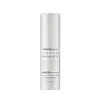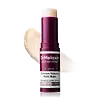What's inside
What's inside
 Key Ingredients
Key Ingredients

 Benefits
Benefits

 Concerns
Concerns

No concerns
 Ingredients Side-by-side
Ingredients Side-by-side

Water
Skin ConditioningDibutyl Adipate
EmollientSynthetic Wax
AbrasiveCaprylic/Capric Triglyceride
MaskingHelianthus Annuus Seed Oil
EmollientPolyglyceryl-2 Triisostearate
EmulsifyingButylene Glycol
HumectantVinyldimethicone
Octyldodecanol
EmollientTocopheryl Acetate
AntioxidantOzokerite
Emulsion StabilisingGlycerin
HumectantPolyethylene
AbrasiveVinyl Dimethicone/Methicone Silsesquioxane Crosspolymer
Polyglyceryl-4 Diisostearate/Polyhydroxystearate/Sebacate
EmulsifyingOryza Sativa Extract
AbsorbentStellaria Media Extract
Skin ConditioningCentella Asiatica Extract
CleansingCeramide NP
Skin ConditioningCeramide As
Skin ConditioningCeramide AP
Skin ConditioningCeramide Ns
Skin ConditioningCeramide EOP
Skin ConditioningCholesterol
EmollientLactobacillus Ferment
Skin ConditioningHydrogenated Lecithin
EmulsifyingOryza Sativa Bran Oil
EmollientSodium Chloride
MaskingMicrocrystalline Wax
Emulsion StabilisingBisabolol
MaskingLauryl Polyglyceryl-3 Polydimethylsiloxyethyl Dimethicone
Skin ConditioningPolyglyceryl-5 Polyricinoleate
EmulsifyingGlyceryl Caprylate
EmollientCaprylyl Glycol
Emollient1,2-Hexanediol
Skin ConditioningEthylhexylglycerin
Skin ConditioningStearalkonium Hectorite
Gel FormingPropylene Carbonate
SolventDipropylene Glycol
HumectantTocopherol
AntioxidantGlyceryl Stearate
EmollientWater, Dibutyl Adipate, Synthetic Wax, Caprylic/Capric Triglyceride, Helianthus Annuus Seed Oil, Polyglyceryl-2 Triisostearate, Butylene Glycol, Vinyldimethicone, Octyldodecanol, Tocopheryl Acetate, Ozokerite, Glycerin, Polyethylene, Vinyl Dimethicone/Methicone Silsesquioxane Crosspolymer, Polyglyceryl-4 Diisostearate/Polyhydroxystearate/Sebacate, Oryza Sativa Extract, Stellaria Media Extract, Centella Asiatica Extract, Ceramide NP, Ceramide As, Ceramide AP, Ceramide Ns, Ceramide EOP, Cholesterol, Lactobacillus Ferment, Hydrogenated Lecithin, Oryza Sativa Bran Oil, Sodium Chloride, Microcrystalline Wax, Bisabolol, Lauryl Polyglyceryl-3 Polydimethylsiloxyethyl Dimethicone, Polyglyceryl-5 Polyricinoleate, Glyceryl Caprylate, Caprylyl Glycol, 1,2-Hexanediol, Ethylhexylglycerin, Stearalkonium Hectorite, Propylene Carbonate, Dipropylene Glycol, Tocopherol, Glyceryl Stearate
Caprylic/Capric Triglyceride
MaskingPolyglyceryl-2 Triisostearate
EmulsifyingPolyethylene
AbrasiveMicrocrystalline Wax
Emulsion StabilisingOctyldodecanol
EmollientTriethylhexanoin
Masking1,2-Hexanediol
Skin ConditioningCaprylyl Glycol
EmollientLimnanthes Alba Seed Oil
Skin ConditioningMacadamia Ternifolia Seed Oil
EmollientOlea Europaea Fruit Oil
MaskingPersea Gratissima Oil
Skin ConditioningSimmondsia Chinensis Seed Oil
EmollientEclipta Prostrata Extract
Skin ConditioningEclipta Prostrata Leaf Extract
Skin ConditioningGlycyrrhiza Glabra Root Extract
BleachingAdenosine
Skin ConditioningMoringa Oleifera Seed Oil
EmollientWater
Skin ConditioningButylene Glycol
HumectantGlycerin
HumectantPrunus Amygdalus Dulcis Fruit Extract
Skin ConditioningTremella Fuciformis Extract
HumectantTabebuia Impetiginosa Bark Extract
Skin ConditioningHydrolyzed Elastin
EmollientHydrogenated Lecithin
EmulsifyingGlucose
HumectantArginine
MaskingHydroxypropyl Methylcellulose
Emulsion StabilisingCitric Acid
BufferingCI 77220
Cosmetic ColorantAscorbic Acid
AntioxidantAcetyl Glucosamine
Skin ConditioningGlutathione
Collagen Extract
Skin ConditioningCaprylic/Capric Triglyceride, Polyglyceryl-2 Triisostearate, Polyethylene, Microcrystalline Wax, Octyldodecanol, Triethylhexanoin, 1,2-Hexanediol, Caprylyl Glycol, Limnanthes Alba Seed Oil, Macadamia Ternifolia Seed Oil, Olea Europaea Fruit Oil, Persea Gratissima Oil, Simmondsia Chinensis Seed Oil, Eclipta Prostrata Extract, Eclipta Prostrata Leaf Extract, Glycyrrhiza Glabra Root Extract, Adenosine, Moringa Oleifera Seed Oil, Water, Butylene Glycol, Glycerin, Prunus Amygdalus Dulcis Fruit Extract, Tremella Fuciformis Extract, Tabebuia Impetiginosa Bark Extract, Hydrolyzed Elastin, Hydrogenated Lecithin, Glucose, Arginine, Hydroxypropyl Methylcellulose, Citric Acid, CI 77220, Ascorbic Acid, Acetyl Glucosamine, Glutathione, Collagen Extract
Ingredients Explained
These ingredients are found in both products.
Ingredients higher up in an ingredient list are typically present in a larger amount.
1,2-Hexanediol is a synthetic liquid and another multi-functional powerhouse.
It is a:
- Humectant, drawing moisture into the skin
- Emollient, helping to soften skin
- Solvent, dispersing and stabilizing formulas
- Preservative booster, enhancing the antimicrobial activity of other preservatives
Butylene Glycol (or BG) is used within cosmetic products for a few different reasons:
Overall, Butylene Glycol is a safe and well-rounded ingredient that works well with other ingredients.
Though this ingredient works well with most skin types, some people with sensitive skin may experience a reaction such as allergic rashes, closed comedones, or itchiness.
Learn more about Butylene GlycolThis ingredient is an emollient, solvent, and texture enhancer. It is considered a skin-softener by helping the skin prevent moisture loss.
It helps thicken a product's formula and makes it easier to spread by dissolving clumping compounds.
Caprylic Triglyceride is made by combining glycerin with coconut oil, forming a clear liquid.
While there is an assumption Caprylic Triglyceride can clog pores due to it being derived from coconut oil, there is no research supporting this.
Learn more about Caprylic/Capric TriglycerideCaprylyl Glycol is a humectant and emollient, meaning it attracts and preserves moisture.
It is a common ingredient in many products, especially those designed to hydrate skin. The primary benefits are retaining moisture, skin softening, and promoting a healthy skin barrier.
Though Caprylyl Glycol is an alcohol derived from fatty acids, it is not the kind that can dry out skin.
This ingredient is also used as a preservative to extend the life of products. It has slight antimicrobial properties.
Learn more about Caprylyl GlycolGlycerin is already naturally found in your skin. It helps moisturize and protect your skin.
A study from 2016 found glycerin to be more effective as a humectant than AHAs and hyaluronic acid.
As a humectant, it helps the skin stay hydrated by pulling moisture to your skin. The low molecular weight of glycerin allows it to pull moisture into the deeper layers of your skin.
Hydrated skin improves your skin barrier; Your skin barrier helps protect against irritants and bacteria.
Glycerin has also been found to have antimicrobial and antiviral properties. Due to these properties, glycerin is often used in wound and burn treatments.
In cosmetics, glycerin is usually derived from plants such as soybean or palm. However, it can also be sourced from animals, such as tallow or animal fat.
This ingredient is organic, colorless, odorless, and non-toxic.
Glycerin is the name for this ingredient in American English. British English uses Glycerol/Glycerine.
Learn more about GlycerinHydrogenated Lecithin is created from the hydrogenation of lecithin (a group of phospholipids). Hydrogenation is a chemical reaction between hydrogen and another element.
This ingredient is an emollient and emulsifier. As an emollient, it helps soften skin by trapping moisture within. As an emulsifier, it prevents oil and water ingredients from separating.
Microcrystalline Wax is created by de-oiling petroleum. It is highly refined and purified before being added to cosmetics.
Microcrystalline Wax is used to enhance the texture and create even consistency. It helps stabilize a product by preventing ingredients from separating.
Octyldodecanol is a fatty alcohol. It is primarily used to enhance the texture of products.
As an emulsifier, Octyldodecanol helps prevent the oils and waters from separating. It also prevents ingredients from creating foam when shaken.
Octyldodecanol is created by reducing fatty acid to an alcohol.
Due to its high molecular weight, it does not get absorbed into the skin.
Learn more about OctyldodecanolPolyethylene is a synthetic ingredient that helps the skin retain moisture. It is a polymer.
It is also typically used within product formulations to help bind solid ingredients together and thicken oil-based ingredients. When added to balms and emulsions, it helps increase the melting point temperature.
This ingredient is a form of glycerin with emulsifying and emollient properties.
As an emulsifier, this ingredient helps keep products together while adding a thick texture. The manufacturer states this ingredient has emollient properties. Emollients help keep the skin hydrated by trapping moisture in.
Polyglyceryl-2 Triisostearate is created by reacting diglycerin and isostearic acid. Due to the isostearic acid base, it may not be safe for Malassezia or fungal acne.
Learn more about Polyglyceryl-2 TriisostearateWater. It's the most common cosmetic ingredient of all. You'll usually see it at the top of ingredient lists, meaning that it makes up the largest part of the product.
So why is it so popular? Water most often acts as a solvent - this means that it helps dissolve other ingredients into the formulation.
You'll also recognize water as that liquid we all need to stay alive. If you see this, drink a glass of water. Stay hydrated!
Learn more about Water